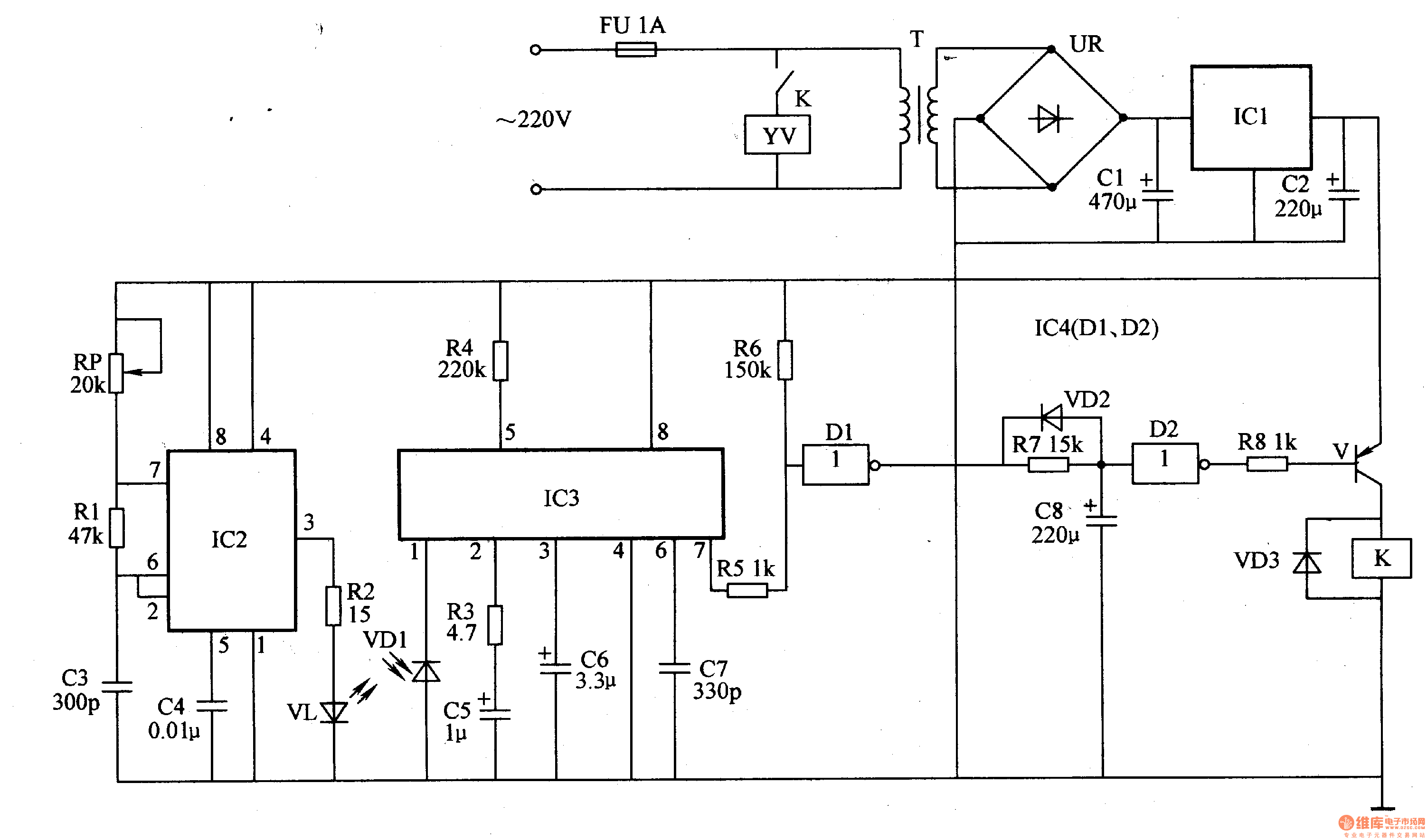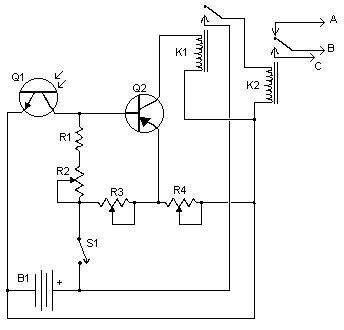
Automatic Heat Detector

This circuit utilizes a complementary pair consisting of an npn metallic transistor T1 (BC109) and a pnp germanium transistor T2 (AC188) to detect heat.
The circuit is designed to leverage the thermal sensitivity of the complementary transistor pair, where the BC109 npn transistor is typically more responsive to temperature increases compared to its pnp counterpart, the AC188. The operation principle relies on the fact that both transistors will exhibit changes in their current flow as the temperature varies, allowing for effective heat detection.
In the circuit layout, the BC109 is configured in such a way that it amplifies the signal generated by temperature changes, while the AC188 can be used to switch or control a load based on the output from the BC109. The configuration may include resistors to set the biasing conditions for both transistors, ensuring optimal operation within their specified ranges.
The output of this circuit can be connected to an indicator, such as an LED, or can be integrated into a more complex system where heat detection is critical, such as in temperature monitoring systems or safety devices that shut down equipment in the event of overheating.
Overall, this complementary transistor circuit is a robust solution for heat detection applications, providing a reliable method for monitoring temperature changes through the use of semiconductor technology.This circuit uses a complementary pair comprising npn metallic transistor T1 (BC109) and pnp germanium transistor T2 (AC188) to detect heat (due to outbre.. 🔗 External reference
The circuit is designed to leverage the thermal sensitivity of the complementary transistor pair, where the BC109 npn transistor is typically more responsive to temperature increases compared to its pnp counterpart, the AC188. The operation principle relies on the fact that both transistors will exhibit changes in their current flow as the temperature varies, allowing for effective heat detection.
In the circuit layout, the BC109 is configured in such a way that it amplifies the signal generated by temperature changes, while the AC188 can be used to switch or control a load based on the output from the BC109. The configuration may include resistors to set the biasing conditions for both transistors, ensuring optimal operation within their specified ranges.
The output of this circuit can be connected to an indicator, such as an LED, or can be integrated into a more complex system where heat detection is critical, such as in temperature monitoring systems or safety devices that shut down equipment in the event of overheating.
Overall, this complementary transistor circuit is a robust solution for heat detection applications, providing a reliable method for monitoring temperature changes through the use of semiconductor technology.This circuit uses a complementary pair comprising npn metallic transistor T1 (BC109) and pnp germanium transistor T2 (AC188) to detect heat (due to outbre.. 🔗 External reference





